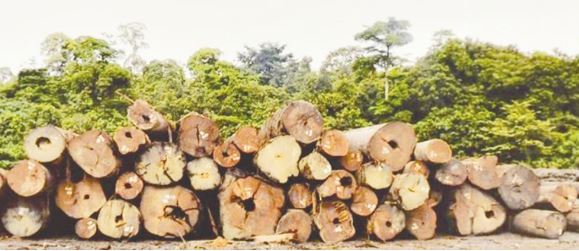
Malaysia’s timber exports may gain a competitive edge in the US
market due to higher tariffs imposed on regional rivals such as
Vietnam and Indonesia.
Vietnam, once a leading furniture exporter in the region, now
faces tariffs as high as 46% compared with Malaysia’s import
levy of 24%, Forest Research Institute Malaysia (FRIM) director
of forest products division Wan Tarmeze Wan Ariffin said.
“US President Donald Trump imposed higher tariffs on Vietnam
probably because they’re afraid China might use Vietnam as a
manufacturing hub” to bypass American trade restrictions,” he
told Bernama.
The United States is the largest buyer of Malaysian furniture,
accounting for over half of furniture exports.
However, the tariffs announced on April 2 have been paused for
90 days till early July to allow America’s trading partners to
negotiate for lower tariffs.
“If they don’t impose high tariffs on Vietnam, China could
exploit that route. So, on paper, the advantage actually lies
with us (Malaysia),” he said.
In 2022, Malaysia exported timber and timber products worth
RM7.73 billion to the US. This was an increase from RM3.76
billion in 2018.
Malaysia’s timber exports worldwide include furniture, logs,
veneer, plywood and medium-density fibreboard.
Asked on the challenges faced by the timber industry, Wan
Tarmeze said Malaysia’s furniture sector primarily relies on
processed wood rather than solid timber, with wood-based
materials accounting for up to 85% of inputs in the making of
the furniture.
Wan Tarmeze said the ongoing Iran-Israel military conflict is
not expected to have a direct impact on Malaysia’s timber
exports. Nevertheless, post-conflict reconstruction could open
up new market opportunities and raise demand for Malaysian
timber.
“Wars often lead to widespread destruction, but once the
situation stabilises, there’s usually a surge in demand for
rebuilding – including homes and infrastructure,” he said.
When asked how Malaysia can position itself as a high-value
timber exporter rather than a volume-based player, he said the
shift ultimately depends on the industry players themselves.
“This has been a long-standing conversation as Malaysia is still
heavily reliant on the original equipment manufacturer (OEM)
model, manufacturing timber products for others without having
its own strong, internationally recognised brands.
“Take IKEA for example, which is a Swedish brand while Italy has
its own well-known brand names, but Malaysia has yet to produce
a brand that stands out globally,” Wan Tarmeze said.
OEM refers to manufacturing products for other brands, whereas
original brand manufacturers (OBM) involves developing and
marketing products under one’s own brand name.
Wan Tarmeze said that despite the government’s repeated calls
for the industry to move from being OEM to OBM, the shift has
yet to happen.
“The issue is not about identity but branding, and without
branding we can’t build value.
“The truth is Malaysia tends to shy away from copying, but we
should be more open to learning from others, even “stealing”
ideas in the sense of adapting best practices and making them
our own,” he said.
Source:
thesun.my